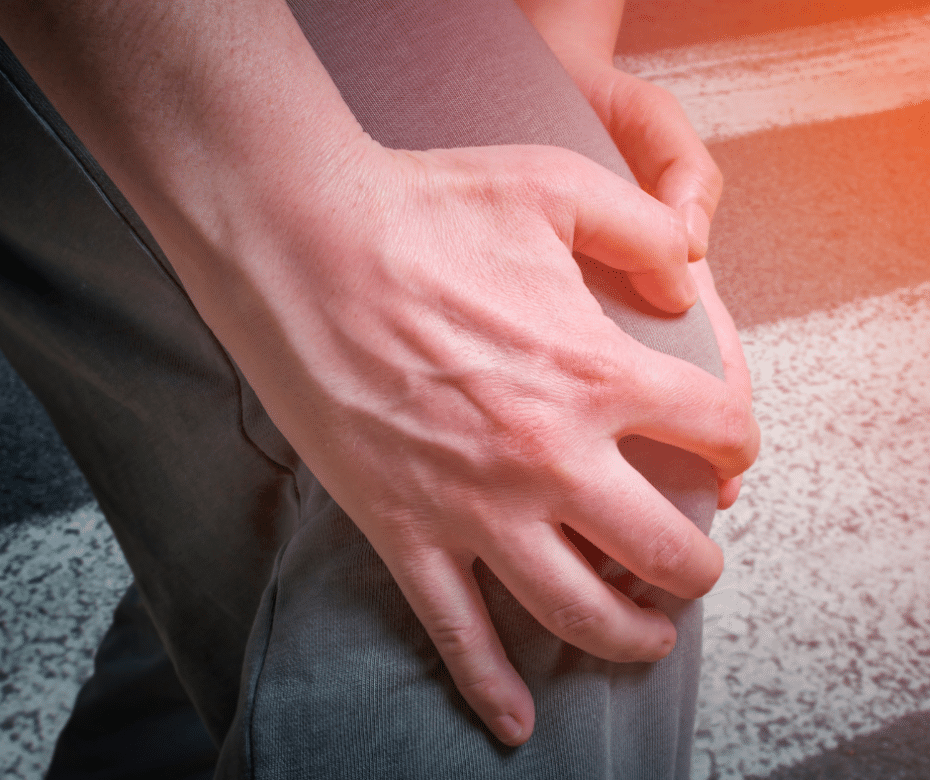
Feeling it in your bones
Do you feel that you have more joint discomfort with cold weather? A study performed at Tufts-New England Medical Center in Boston found that changes in ambient temperature and barometric pressure can increase joint pain. This has been investigated more so in individuals with osteoarthritis and rheumatoid arthritis. Barometric pressure can vary greatly depending on the weather changes, which may explain why your grandma can “feel it in her bones” when there is rain coming.1,2
Other studies have found similar results: when assessing joints themselves, increased swelling, stiffness, and pain has been noted with changes in barometric pressure and increased cold temperatures.1,3
There are several reasonings as to why joints may experience these changes with the colder seasons other than just barometric pressure changes, including:4
- Colder weather generally can increase stiffness of the muscles around a joint, making it harder to move, making your joints feel more stiff and potentially painful.
- Decreased level of mood, which has been shown to change the perception of pain.
- Increased sedentary activities from staying inside more often because of the cold weather, which can exacerbate a joint condition.
Make no assumptions
Many may look at these results and assume that they must have osteo- or rheumatoid arthritis because they feel more achy when it changes from fall to winter, but it is important to not jump to this conclusion.
There may be several different reasons for joint discomfort with colder weather or changes in weather in general. There are many other joint problems that can cause increased joint stiffness and pain beyond these diagnoses.
Set yourself up for success
According to the Arthritis Foundation, there are foods that can increase your joint pain even if you don’t have arthritis. The following foods are some to consider avoiding to reduce inflammation in the body:5
- Refined carbohydrates
- Gluten
- Refined sugars
- Aspartame
- Alcohol
Please note that this is not an exhaustive list of foods that can increase inflammation, but it is a good start for the most common foods that can contribute to aches and pains.
Other studies have confirmed that nutrition can play a big role in pain and disease. A long term study found significant reduction in diseases involving inflammation when individuals focused on diets high in vegetables, fruits, healthy oils, high fiber, and low in refined sugar and starchy carbohydrates.6
Here are even more ways to reduce joint discomfort beyond what you eat:
- Keep moving, even in the cold! Try to remain physically active during the colder months.
- Dress warmly–It is easier to take off layers than to add when you are out running errands in the cold. Keeping your body warmer may prevent increased stiffness in your muscles and joints.
- Keep on the sunny side–If you recognize that colder months make it harder to have an upbeat mood, try to find things about the winter that you enjoy and focus on these instead of what you dislike about winter. It might help change your perspective, and possibly your perception of pain.
Get the right diagnosis
If you experience joint aching or discomfort with these types of changes and want to explore real solutions, book an appointment with our chiropractors or physical therapist (or both). We would be happy to help you find the right diagnosis and treatment for your joint discomfort. It very well may not be a type of arthritis, even if you have been told that the pain you are experiencing in your joint is due to degeneration found on imaging (like an MRI or xray).7
Book an appointment
Whether it is spring, summer, fall, or winter, we are here and excited to help you live your best life. Call us at 515-421-4018 or book online.
References
- McAlindon, T., Formica, M., Schmid, C. H., & Fletcher, J. (2007). Changes in barometric pressure and ambient temperature influence osteoarthritis pain. The American Journal of Medicine, 120(5), 429–434. https://doi.org/10.1016/j.amjmed.2006.07.036
- Azzouzi, H., & Ichchou, L. (2020). Seasonal and weather effects on rheumatoid arthritis: Myth or reality? Pain Research and Management, 2020, 1–5. https://doi.org/10.1155/2020/5763080
- Timmermans, E. J., Schaap, L. A., Herbolsheimer, F., Dennison, E. M., Maggi, S., Pedersen, N. L., Castell, M. V., Denkinger, M. D., Edwards, M. H., Limongi, F., Sánchez-Martínez, M., Siviero, P., Queipo, R., Peter, R., van der Pas, S., & Deeg, D. J. H. (2015). The influence of weather conditions on joint pain in older people with osteoarthritis: Results from the European project on osteoarthritis. The Journal of Rheumatology, 42(10), 1885–1892. https://doi.org/10.3899/jrheum.141594
- Why does cold weather make my joints hurt? Dr Ronak Patel Orthopedic Surgeon Cartilage Restoration ACL Reconstruction Hinsdale IL. (n.d.). Retrieved December 8, 2021, from https://www.drronakpatel.com/blog-munster-hinsdale-westmont-elmhurst-il/why-does-cold-weather-make-my-joints-hurt-19043/.
- 8 food ingredients that can cause inflammation – arthritis foundation. (n.d.). Retrieved December 9, 2021, from https://www.arthritis.org/health-wellness/healthy-living/nutrition/foods-to-limit/8-food-ingredients-that-can-cause-inflammation.
- Tick, H. (2015). Nutrition and pain. Physical Medicine and Rehabilitation Clinics of North America, 26(2), 309–320. https://doi.org/10.1016/j.pmr.2014.12.006
- Brinjikji, W., Luetmer, P. H., Comstock, B., Bresnahan, B. W., Chen, L. E., Deyo, R. A., Halabi, S., Turner, J. A., Avins, A. L., James, K., Wald, J. T., Kallmes, D. F., & Jarvik, J. G. (2014). Systematic literature review of imaging features of spinal degeneration in asymptomatic populations. American Journal of Neuroradiology, 36(4), 811–816. https://doi.org/10.3174/ajnr.a4173
Share this Post

